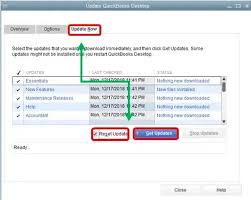Introduction:
QuickBooks is an effective accounting software that can simplify the management of finances for companies. An essential aspect of keeping precise financial records is to establish that opening balance. When you’re establishing your own business or you need to modify existing accounts, knowing how to enter, add or edit the opening balance of QuickBooks is crucial. In this article we’ll guide you through the steps needed to make sure the accuracy of your financial records starting from the beginning.
1. **Understanding Opening Balances:**
An opening balance is the financial status for an account in the start of a certain time. It is especially important in the transition between manual and QuickBooks or when setting up a brand new business file.
2. **Adding a New Bank Account with an Opening Balance:
– Start QuickBooks and then navigate to “Chart of Accounts” by choosing “Lists” after which click “Chart of Accounts.”
click on “Account” and then select “New” to open an account. Choose the type of account you want to use and then fill in the appropriate information.
If you are asked for the balance of the account that was opened you must enter the balance at the time of the date. The amount you enter represents the financial situation of the account at the start of your financial records.
3. **Entering Opening Balances for Existing Accounts:**
To add an opening balance on an account that is already in existence go into the “Chart of Accounts” and then select the account you’d like to modify.
Select “Edit the Account” and enter the opening balance. Make sure the date is in line with the date of entry into your financial documents.
4. **Editing an Existing Opening Balance:**
– In QuickBooks you will find in QuickBooks the “Chart of Accounts” and find the account that has the balance at the beginning you want to change.
Select “Edit Your Account” and change the balance at opening. Be careful when editing to keep your financial record.
5. **Reconciliation and Verification:**
After you’ve edited or added opening balances, it is essential that you reconcile the accounts. Utilize the “Reconcile” feature of QuickBooks to make sure that your accounts are in line with bank statements as well as any other documents related to finances.
6. **Seeking Professional Assistance:**
If you face difficulties or are faced with complex financial issues, think about consulting with a financial expert as well as a QuickBooks expert. They can offer a customized plan of action for your specific requirements.
7. **Regular Maintenance:**
Make sure your financial records are up-to-date by reviewing and adjusting opening balances especially when major financial events happen for example, mergers, acquisitions and changes to ownership.
Conclusion:
Making, entering or modifying the balance of your opening editing or adding an opening balance in QuickBooks is a crucial step to keep complete accounting records for your business. When you’re beginning an entirely new business or making adjustments to existing accounts, implementing these steps can help you build a solid financial foundation within QuickBooks Support. Reviewing and updating your opening balances will ensure that your accounting data is exact and reliable to ensure effective business management.



